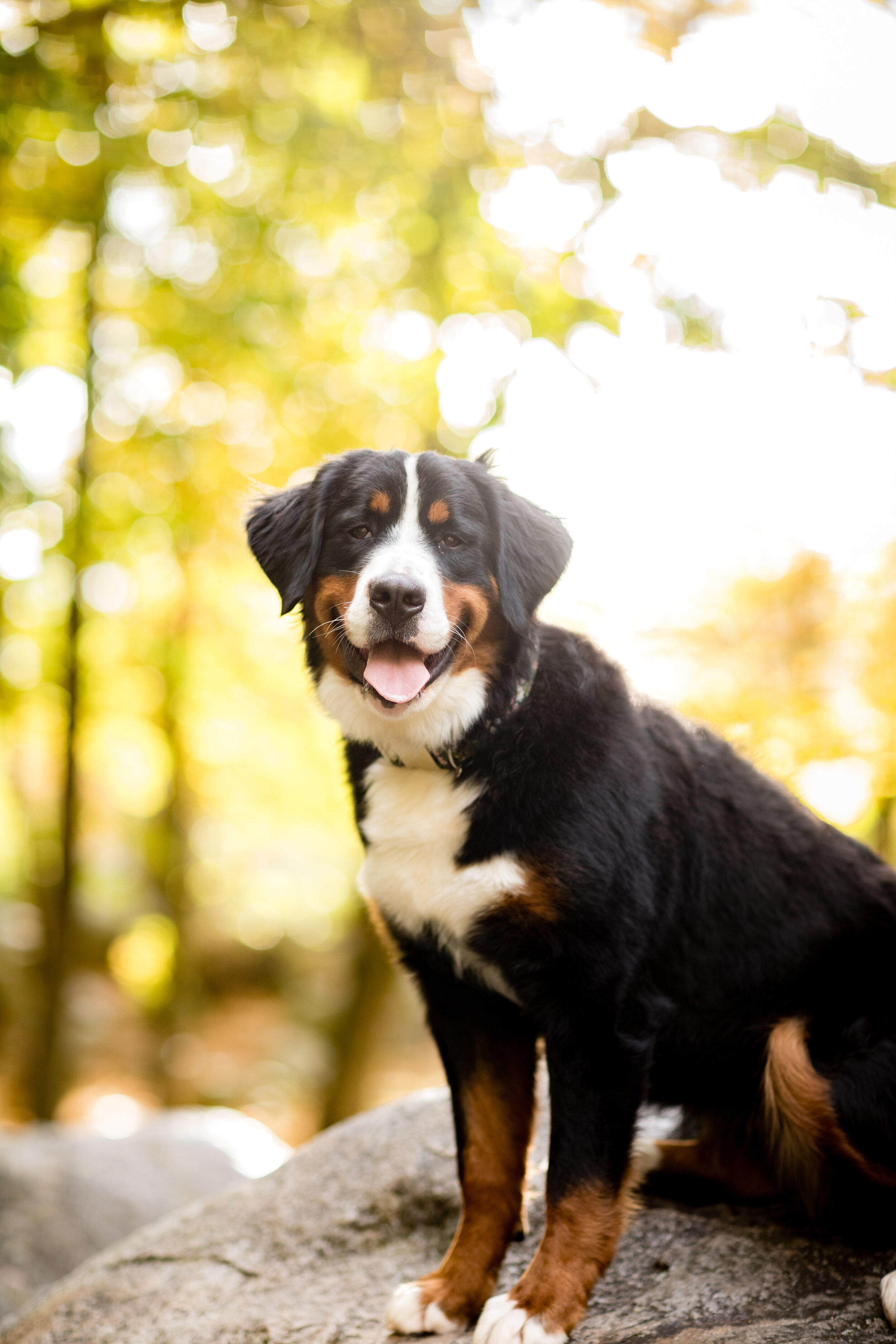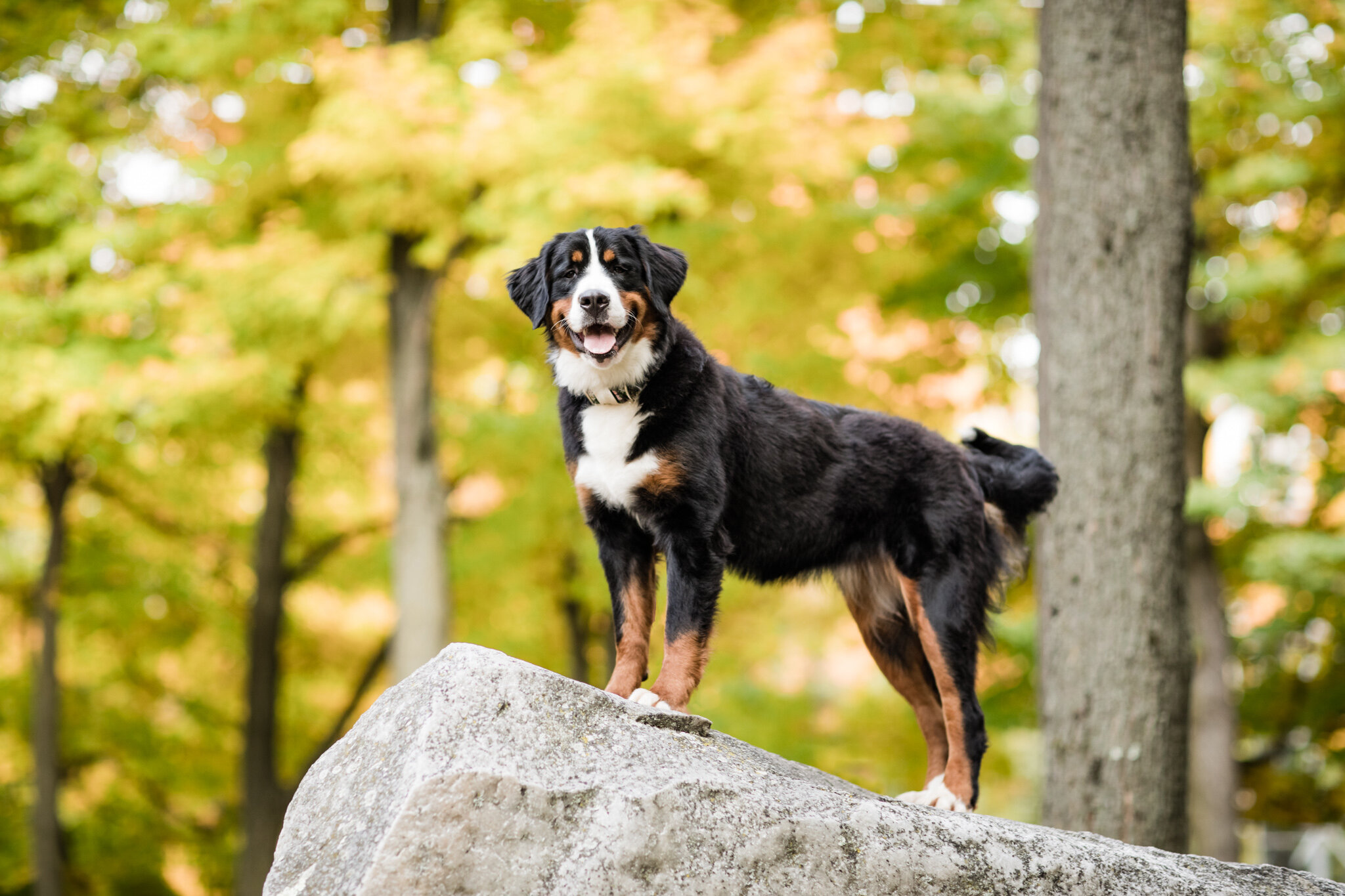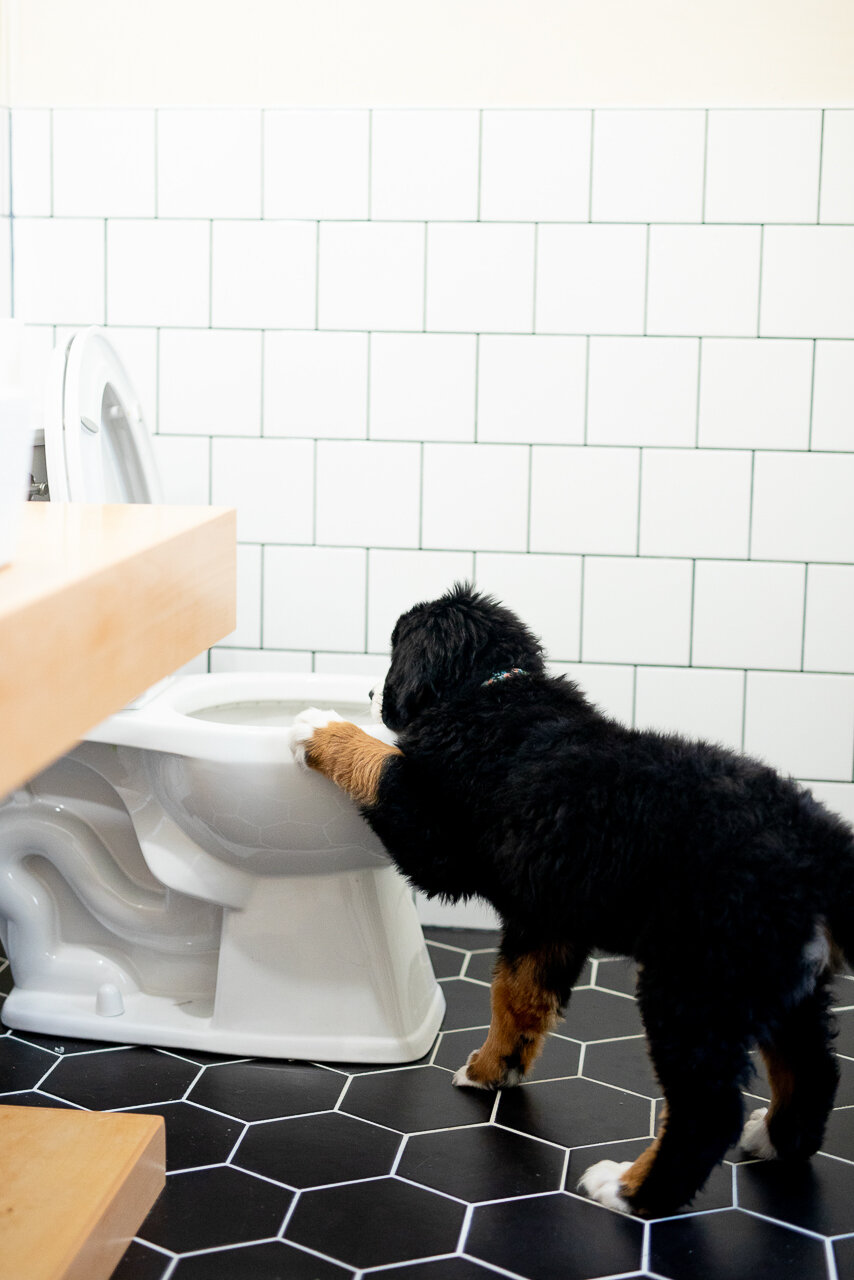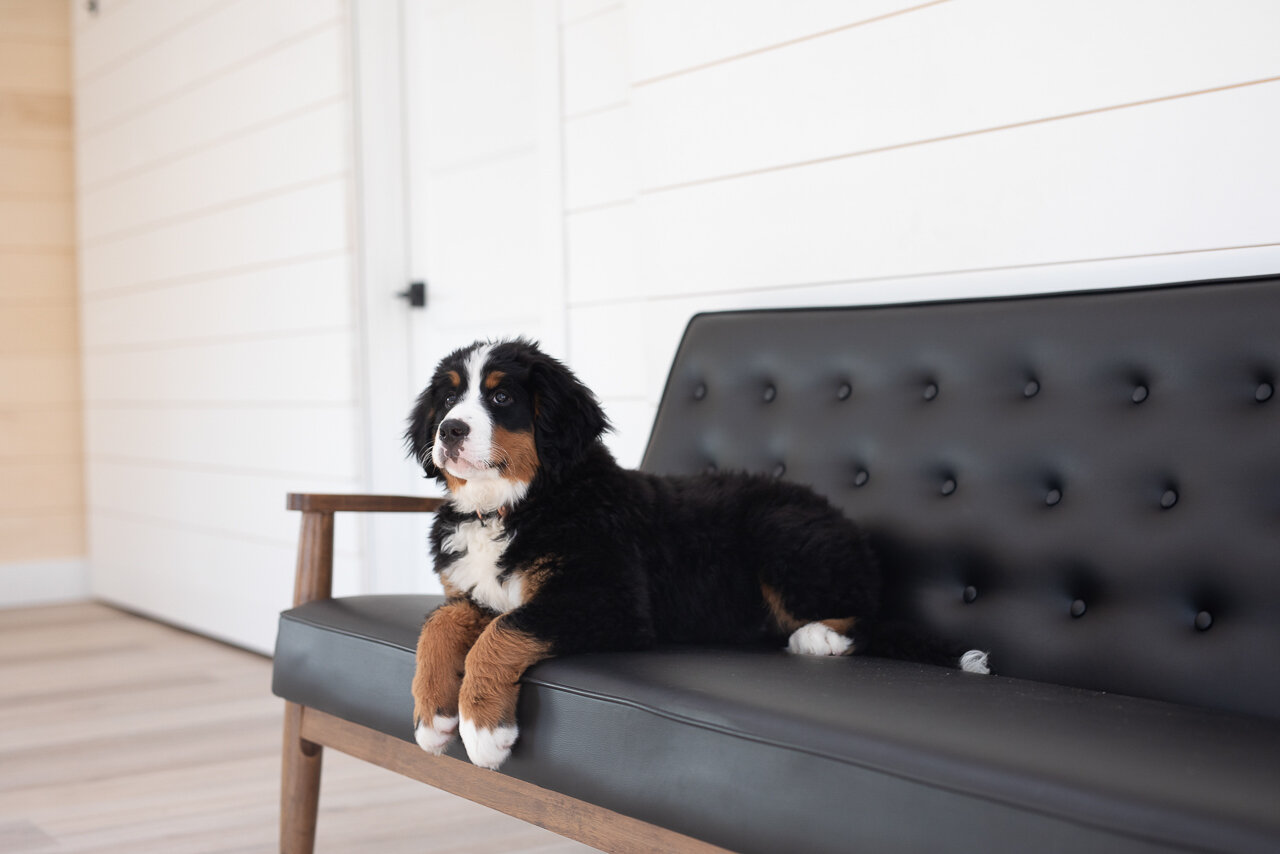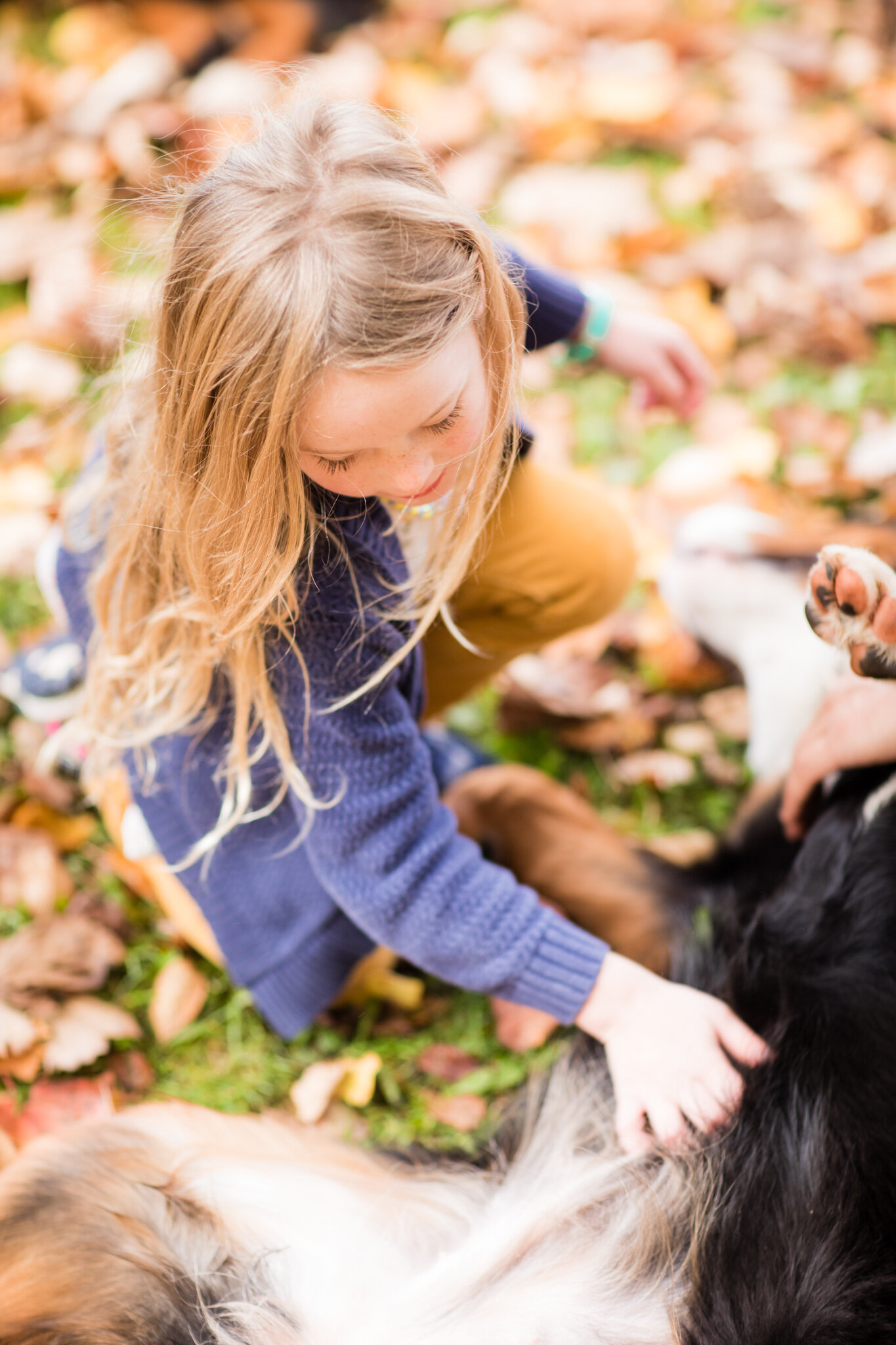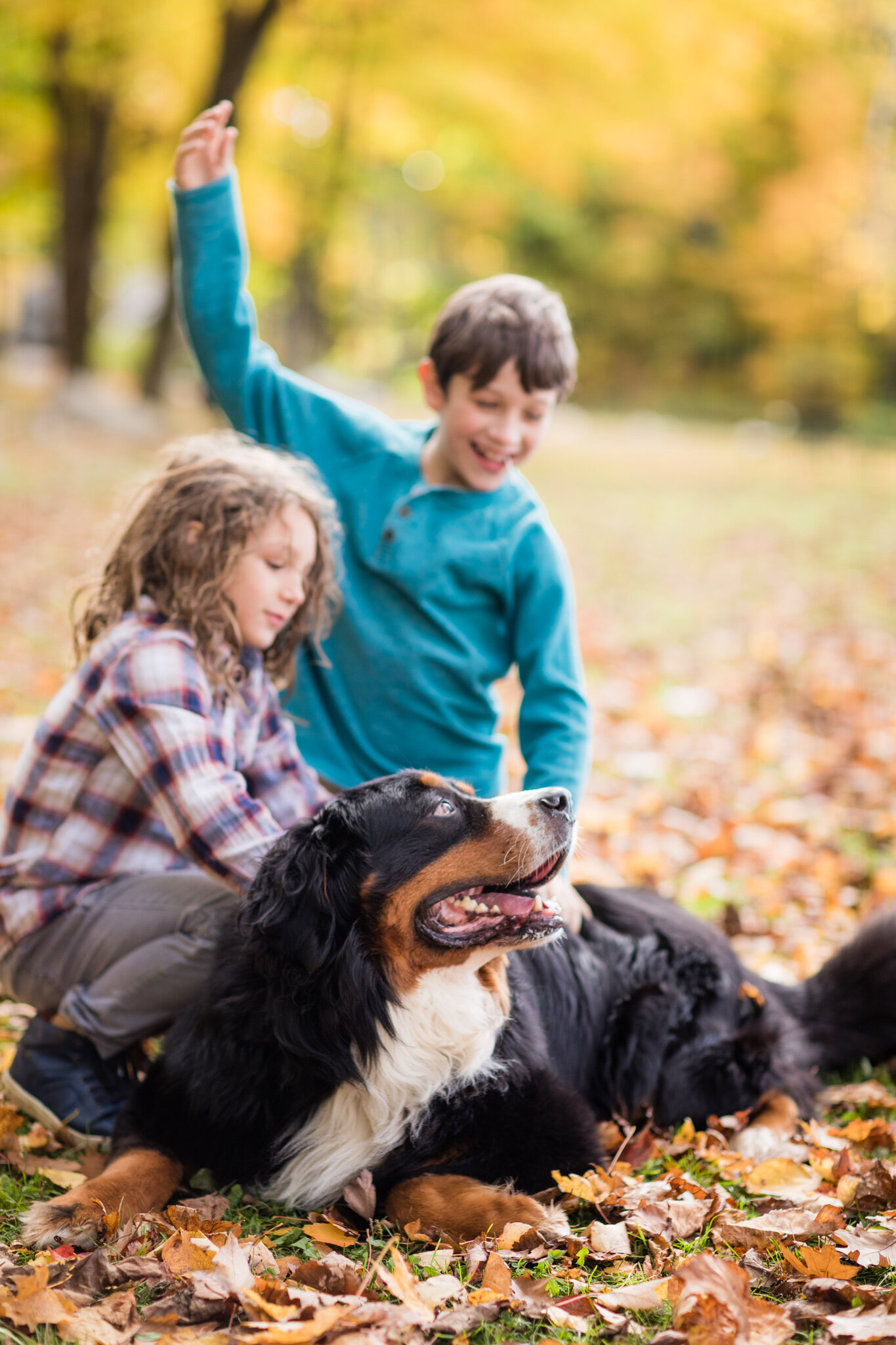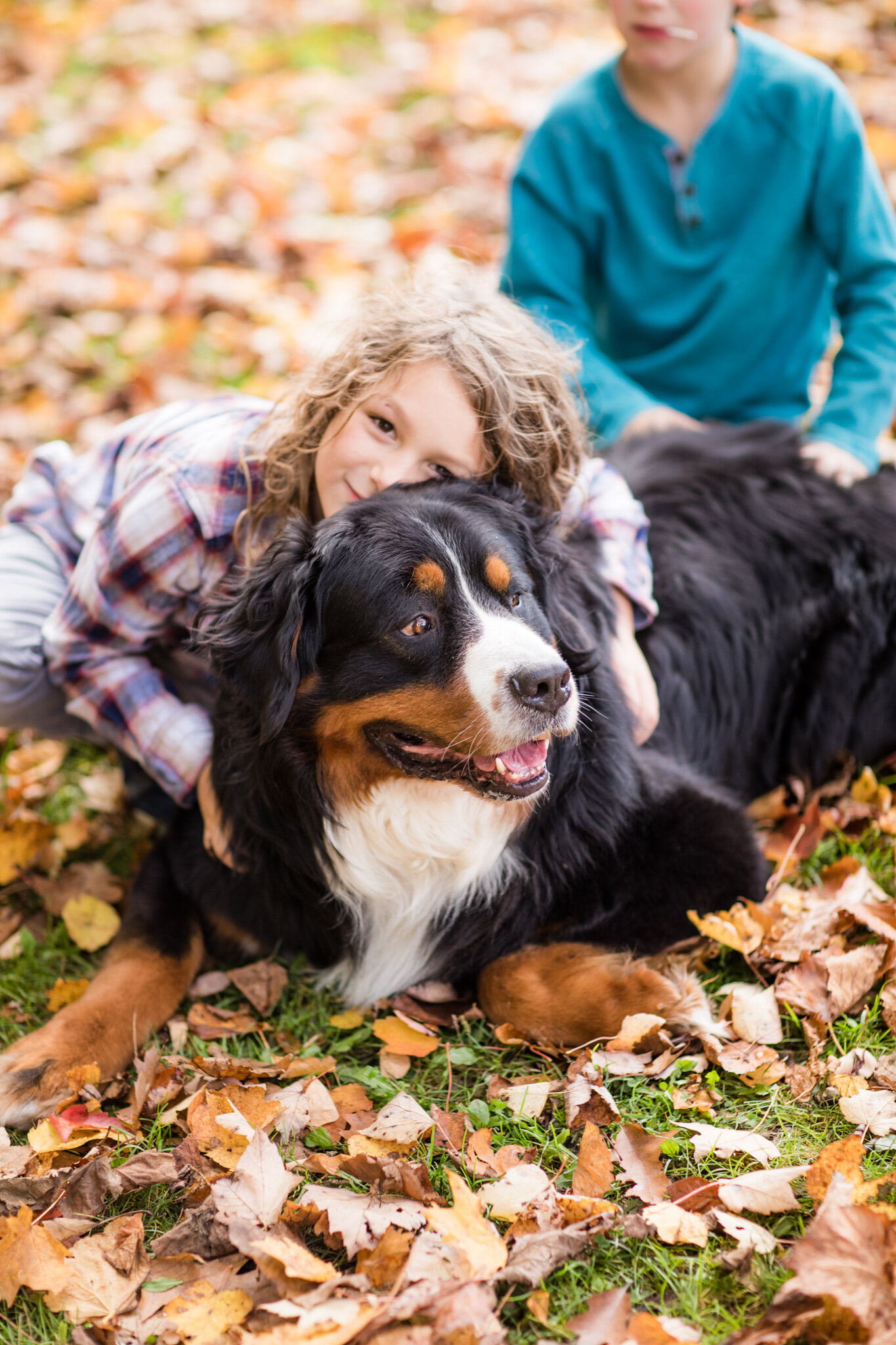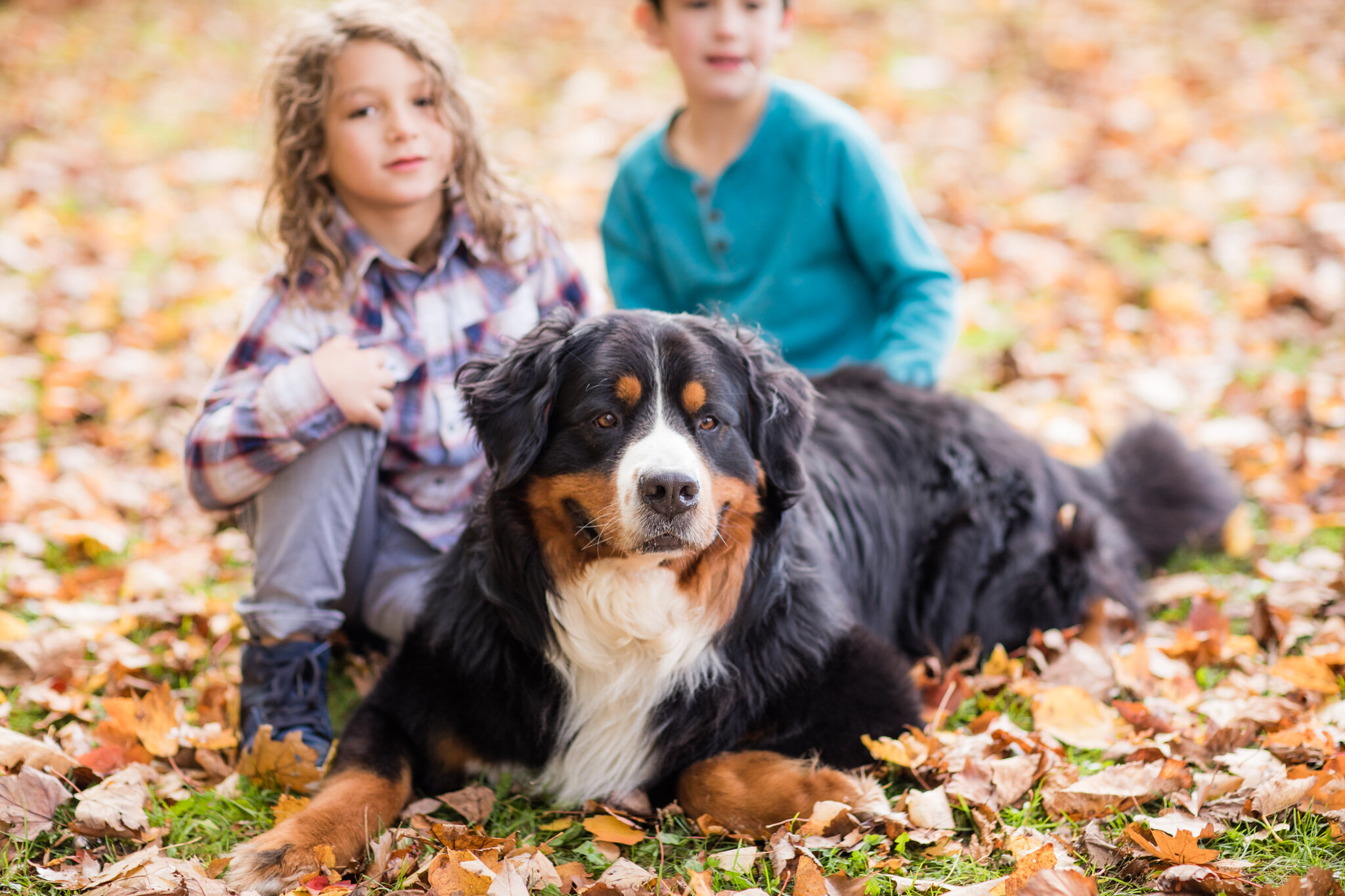Bernese Mountain Dog
“Berner”
“A BEAUTIFULLY MARKED, VERSATILE BREED WITH AN ATTRACTIVE PERSONALITY KIND NATURE, THIS DOG ENJOYS FAMILY LIFE ”
Height: 23-28 in (58 -70 cm)
Weight: 71-120 lbs 32-54 kg
Lifespan: Under 10 years
Origin and History of the Bernese Mountain Dog
Originating as versatile farm dogs in the Swiss Alps, the Bernese Mountain Dog, or Berner Sennenhund, boasts a legacy steeped in over 2,000 years of history. Initially bred for a myriad of tasks including herding cattle, pulling carts, and safeguarding property, their lineage can be traced back to the ancient 'Molosser' breed, influencing Mastiff-type dogs like the Berner.
Through centuries of evolution, these noble canines transitioned from working the Swiss farmlands to becoming esteemed show dogs in the 20th century, officially recognized as the Bernese Mountain Dog by the Swiss Kennel Club. Despite facing near extinction during World War I, their resilience led to their introduction to America, gaining recognition by the AKC in 1937.
Purpose and Development
The Bernese Mountain Dog's roots intertwine with Roman history in Switzerland, initially serving as indispensable farm companions for tasks ranging from cart pulling to cattle herding. Over time, their specialized skills in herding and draft work earned them acclaim among Alpine herdsmen, cementing their prominence in the region.
Modern Adaptation and Popularity
During the late 1800s, the Bernese Mountain Dog garnered international acclaim, finding its way beyond Swiss borders to countries like Germany and the United States. Despite a decline in numbers due to socio-economic changes and wartime challenges, dedicated enthusiasts formed clubs to revive the breed, propelling their resurgence.
Utility and Historical Role
Historically known as adept draft animals, the Bernese Mountain Dog's strength enabled them to transport goods like milk and cheese from mountainous regions to lower valleys. Their versatility extended to stock control and property guarding, and their prowess in carting showcased their ability to pull impressive weights.
Introduction and Recognition in the US
Lotty, a Bernese Mountain Dog imported from Switzerland in 1926, marked the breed's initial foray into the US. However, it wasn't until the 1960s, with increased imports from Europe, that the breed gained prominence. The establishment of clubs and official recognition by the AKC in 1937 solidified their presence in the American canine landscape.
Enduring Legacy and Challenges
While celebrated for their friendly disposition and loyalty, the Bernese Mountain Dog faces health challenges such as hip and elbow dysplasia, cancer, and genetic disorders. Responsible breeding practices and health testing aim to address these concerns, ensuring the breed's continued legacy as cherished companions.
The Bernese Mountain Dog's journey from Alpine farms to international recognition speaks volumes about their resilience, adaptability, and unwavering devotion. Their rich history intertwines with human civilization, making them not just dogs but beloved companions with a legacy that spans generations.
TEMPERAMENT
The Bernese Mountain Dog boasts a remarkable temperament, characterized by intelligence and trainability. Quick learners, they excel in obedience training due to their eagerness to please their owners. Their high energy levels necessitate mental stimulation to curb boredom, as these dogs thrive in active, engaging environments.
Loyalty and protectiveness are inherent in Berners, forming strong bonds with their families and showcasing a natural inclination for guarding. However, their cautious nature around strangers emphasizes the importance of early socialization to foster confidence and ease.
EXERCISE NEEDS
A breed known for its high energy, Bernese Mountain Dogs require regular physical exercise to maintain their well-being. Activities like walks, runs, and engaging games cater to their active nature. Mental stimulation is equally crucial, involving puzzle toys and obedience training to keep their sharp minds satisfied.
TRAINING AND SOCIALIZATION
Early training employing positive reinforcement techniques is pivotal for a well-rounded Bernese Mountain Dog. Socialization from a young age helps mitigate their natural wariness towards unfamiliar situations and individuals, ensuring a confident and balanced disposition.
SIZE AND APPEARANCE
Characterized by a robust and athletic build, the Bernese Mountain Dog typically weighs between 80 to 115 pounds, presenting a striking and imposing presence. Their thick double coat, available in various tricolor combinations, contributes to their distinctive appearance.
HEALTH AND LIFESPAN
Generally healthy with an average lifespan of 7 to 10 years, Berners are susceptible to specific health conditions like hip dysplasia and certain cancers. Regular vet check-ups are pivotal to detecting and managing potential health issues early.
CARE TIPS FOR PROSPECTIVE OWNERS
Prospective Bernese Mountain Dog owners should consider:
Exercise: Providing ample physical and mental exercise to maintain their dog's well-being.
Socialization: Early exposure to diverse environments and individuals to foster a confident temperament.
Grooming: Regular brushing of their thick double coat to prevent matting.
Diet: A balanced diet tailored to their needs, guided by veterinary advice.
Health Check-ups: Regular veterinary visits and vaccinations for optimal long-term health.
Aspiring Berner owners should embrace these care tips to ensure a fulfilling and healthy life for their beloved companions.
Bernese Mountain Dogs are known for their gentle temperament and make perfect companions for children. Their remarkable patience and tolerance make them great family pets. They also have an attentive nature, making them great guard dogs.
However, Berners are prone to specific health concerns like hip dysplasia and certain cancers. Therefore, it is important to take care of their health with balanced diets and regular veterinary check-ups. Their life expectancy ranges from 7 to 10 years.
With their thick, double-layered coat, Bernese Mountain Dogs require regular grooming to maintain their beautiful appearance. Proper grooming will prevent matting and keep their coat shiny.
Berners are intelligent and eager to learn, making training a rewarding experience. Positive reinforcement-based training methods and regular exercise routines can help fulfill their mental and physical needs.
While owning a Bernese Mountain Dog brings loyalty, affection, and gentle companionship, it is essential to consider their size, exercise needs, and potential health issues before making a decision.
Family Life
The gentle, loving Bernese Mountain Dog is a wonderful choice for households with kids. They love children and often take it upon themselves to watch over them. Bernese Mountain Dogs usually get up and walk away if play becomes too rambunctious, as they would if they needed a break from misbehaving puppies. Their large size and adolescent clumsiness should be considered, as they may knock over a small child during play.
Though the breed is large and sturdy, children should never be allowed to climb or ride on a Bernese Mountain Dog or any other breed, as it may injure the dog or instigate a bite.
Protective
Because they were bred to protect farms and pastures, the Bernese Mountain Dog makes an admirable watchdog. Bernese tends to protect his family and territory and will bark to alert of intruders, but is not aggressive. They may be standoffish with strangers but will accept them once their owner reassures them.
Energy Levels
The Bernese Mountain Dog can have a high level of energy but is a calm and quiet companion if given enough opportunities to run and play. We consider them to have a Medium energy level.
Additional Info
Craves lots of attention
High daily exercise requirements
Considerable health concerns
Short lifespan
May bark
May Chew or Dig
Conclusion
The Bernese Mountain Dog stands as an enchanting breed, captivating hearts worldwide with its irresistible charm and affectionate nature. While this guide offers an insightful peek into the Berner's world, deeper insights can be gained from reputable breeders and current owners. Whether embracing a Berner into your life or admiring them from afar, their beauty and loving disposition promise an enduring impact.
Why Stokeshire Chooses Bernese as Founding Breeds
Stokeshire proudly incorporates the Bernese Mountain Dog, epitomized by our beloved Bernese female, Feta, into our Bernedoodle, GMD, and AMD program for a multitude of reasons. The Bernese Mountain Dog's legacy and attributes perfectly complement our endeavor to create exceptional hybrid breeds.
Feta embodies the quintessential traits of the Bernese Mountain Dog—friendly, affectionate, and playful, yet calm and well-mannered when exercised. These dogs thrive in companionship and exhibit an eager-to-please attitude, aligning seamlessly with our mission to develop family-oriented, loving companions.
The Bernese Mountain Dog's popularity as a family and therapy dog, coupled with their reliability with children and versatility in various roles from farm work to search and rescue, showcases their adaptability and gentle temperament—qualities we seek to instill in our hybrid programs.
While their tricolor coat adds to their allure, necessitating diligent grooming, their suitability for cooler climates ensures their comfort in our breeding environment. Stokeshire values the Bernese Mountain Dog's beauty, temperament, and adaptability, recognizing them as an integral part of our efforts to create exceptional and beloved hybrid breeds.


